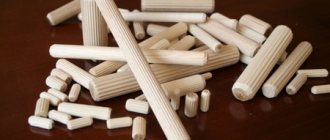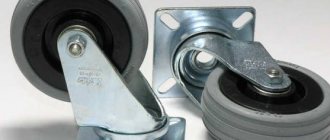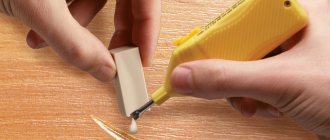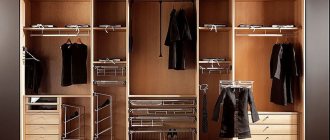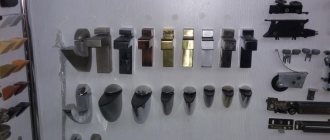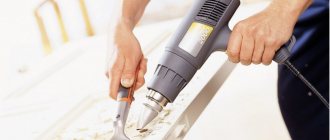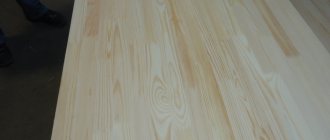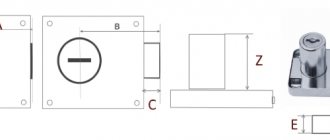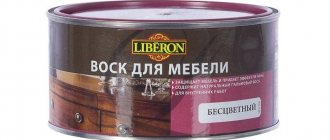A furniture dowel is one of the types of fasteners used in assembling structures made of wood, MDF and other similar materials. His task is to make a hidden connection that will not be conspicuous, but at the same time will be strong and can withstand serious loads in both tension and shear.
Often it is a cylinder of arbitrary size, on which corrugation is made. This allows the dowel to create a reliable connection even if it is decided to assemble without using glue.
Application area
Before describing how to use this fastener, you should understand what a dowel is. The dowel in the design allows you to stabilize and position the parts. It does not prevent disassembly of products if necessary.
The dowel will allow you to accurately connect the elements. During operation of the finished product, such fastening takes on the entire lateral load. This is a universal reliable fastener.
Wooden dowels are actively used for the manufacture and assembly of furniture; their length and diameter are selected in accordance with the thickness of the parts. The diameter should be approximately a third of the wall thickness of the product - this way you can ensure the most reliable assembly while maintaining a high degree of strength. The length is selected individually.
Use of dowels in wooden construction
In wooden construction, dowels made of wood are used. They look aesthetically pleasing and do not reveal the presence of any fasteners on the surface. At the same time, wooden fasteners are easy to install and environmentally friendly. They do not violate the naturalness and safety of wooden structures.
Wooden dowels are used for securing logs and beams. For a log with a diameter of 180 mm or a beam with a cross-section of 240X280 mm, you will need a fastening with a diameter of at least 2.5 cm. How to choose the size of a log for building a country house, see here.
Do not use metal fasteners under any circumstances, as they have a negative effect on natural logs or beams. As a result, the tree may become deformed, begin to rot, or become covered with cracks. In addition, metal connections do not provide the necessary fixation. The lumber will begin to dry out, become loose and shift.
“MariSrub” craftsmen will select reliable and safe fasteners and components for the log house. We offer turnkey construction of log and timber houses. We carry out a full range of work, which includes creating an individual project or changing a standard version, manufacturing lumber and assembling a log house, installing a foundation and roof, finishing a house and connecting utility networks. We guarantee quality and efficiency of construction!
Varieties
In fact, a dowel is a small spike - it is a hidden type of furniture fastener. In appearance, it resembles a cylinder-shaped rod, with slightly rounded or simply truncated ends on both sides. Sometimes, to assemble furniture on dowels, not only wooden elements are used, but also plastic ones. They have slightly different purposes:
- Wooden ones are needed for positioning and connecting furniture parts made of MDF, chipboard, plywood, and solid wood;
- Plastic ones mainly connect parts when installing prefabricated panel furniture.
Wooden
Plastic
There are also metal products. They have improved strength characteristics; they are also called dowels or dowels. But the most commonly used are wooden dowels measuring 30 by 8, that is, the length is 30 mm and the diameter is 8 mm. There is also a smaller diameter - 6 mm. You can purchase different types in construction stores or markets. If you wish, you can make dowels yourself.
There are different grooves on wooden dowels:
- Straight vertical;
- Helical – located at a slight angle to the vertical axis;
- Complex ones - there are transverse and longitudinal recesses - they also allow you to make the adhesive joint stronger;
- Horizontal – help to make the adhesive joint as strong as possible;
- Smooth - do not have corrugation.
Corrugation helps air pass during the installation of dowels, improving the adhesion of the glue with the “glue” method of connecting parts.
Vertical straight lines
Complex
Smooth
Characteristics and dimensions
Dowels may vary in length and diameter. Diameter sizes range from 4 to 30 mm, and lengths from 15 to 200 mm. At the buyer's request, they are manufactured in any variations, where D is the diameter and L is the length of the product.
The dowel is a popular fastener, and therefore professionals try to purchase parts in bulk in advance, so as not to waste time and money on constant purchases. The advantages of fasteners include:
- Corrugation of the surface on the rod - this helps to securely fix the parts, ensuring their strong adhesion;
- Improved appearance of furniture, because the fastenings are completely hidden from view;
- Possibility of selecting the diameter and length required for assembly of the product, in accordance with the design features.
Determining the size of the dowel
Dimensions
How to use dowels when building a house from timber
- The dowel must not be hammered in completely to prevent cracks in the timber.
- The holes in the upper crown for fasteners should be slightly wider, this will prevent the beam from sagging.
- The pin itself must fit into the hole freely; this is necessary for the wood to shrink.
- The holes for them are drilled perpendicular to the surface and located along the axis of the beam.
- The distance between the pin fastenings is calculated according to the construction documentation.
Advantages of fasteners:
- Reliable grip and structural integrity.
- Ability to resist shrinkage and natural phenomena.
- Long service life of the house.
- Minimizing gaps between timber.
Installation and removal methods
Furniture dowels make it possible to significantly increase the strength of connections. But this is not as simple a method as it might seem at first: the connection cannot be secured if any hole is displaced. Depending on the size of the offset, the result will be unsatisfactory.
As a rule, tabletops on dining tables and desks are secured with a dowel. Put them in working position like this:
- The parts are first marked on the end side, and then holes are drilled to the required depth. The same holes are made in the countertops. They must match;
- A cylindrical fastener is installed in the end hole, the upper end protrudes at a distance equal to the depth of the hole in the covering part;
- To strengthen the dowel in the hole, it is generously lubricated with glue, fixing it in the desired position. Sometimes glue is poured into the holes, where the fastener is then inserted - this will completely cover its ribbed surface with glue, improving the adhesion strength of the elements;
- The second part of the design is superimposed on the installed dowel.
Drilling the material
Hammering the dowel
Connect with glue
The work is ready.
There are 3 main problems in assembling furniture using dowels:
- It is possible to assemble an edge-to-edge connection, but in this case, the planes of the structural parts do not coincide. Solution: The drill guide holes were not aligned with the center edges of the parts. The device must be constantly aligned with the reference planes of the two parts being fastened. Even in the absence of a central location of holes in the connection, no shifts or sagging are formed;
- Holes in one part do not line up with another. Solution: to align the holes, use special markers designed specifically for connections. Initially, holes are made in one part with a drill. A marker is then inserted into each hole and the two pieces are pressed together as they should be when assembled. This way, the second part will have marks with markers in the places where you should drill;
- The holes are made in the right places, but the installation of the dowels is disrupted: the fasteners do not fit through or, on the contrary, fall out. Solution: It is important to make sure that the diameter of the fasteners matches the diameter of the holes. Factory fasteners are mass produced and may have a diameter slightly larger or smaller than stated. In addition, wood can swell or shrink with changes in humidity. When the diameter is verified and it is identical, then the problem is the wear of the drilling jig and, as a consequence, the deviation of the drill. This leads to deformation. It is enough to change the bushings or purchase a new device.
To correctly assemble furniture parts onto a dowel, you will need to learn three basic rules:
- To mark, use a sharp pencil or knife. A pencil with a thick lead will not make marks accurately;
- When drilling holes, you need to use drills with a central point. Twist drills with conical sharpening can deviate to the sides during work, setting the wrong direction;
- To ensure uniform hole depths, a locking ring is placed on the drill and firmly fixed. The depth of the hole is made 2 - 3 mm greater than the length of the dowel.
We mark with a pencil
Use center point drills
Use a retaining ring
You can make cylindrical mounts yourself. Here is a short instruction on how to make dowels: To do this, take birch logs and split them into many pieces - you get square blanks. Next, they need to be trimmed by hand or on a lathe to give them a cylindrical shape and the required diameter. Fasteners can also be made using a circular saw.
It happens that the dowel breaks off and one half remains in the hole. The first thing you want to do is take a drill and drill out the fragment. This is incorrect, since the hole will be larger, and choosing a new mount will be more difficult.
The correct solution is to take a drill of a smaller diameter and drill in the center of the fragment. Then, using a screwdriver, chisel or chisel, break up the remaining debris and remove it from the hole. If difficulties arise, you can use photo instructions - there are a lot of them on the Internet.
So, when used correctly, a furniture dowel is a universal fastening that guarantees reliability. It is used for assembling different types of furniture in combination with other types of fasteners.
